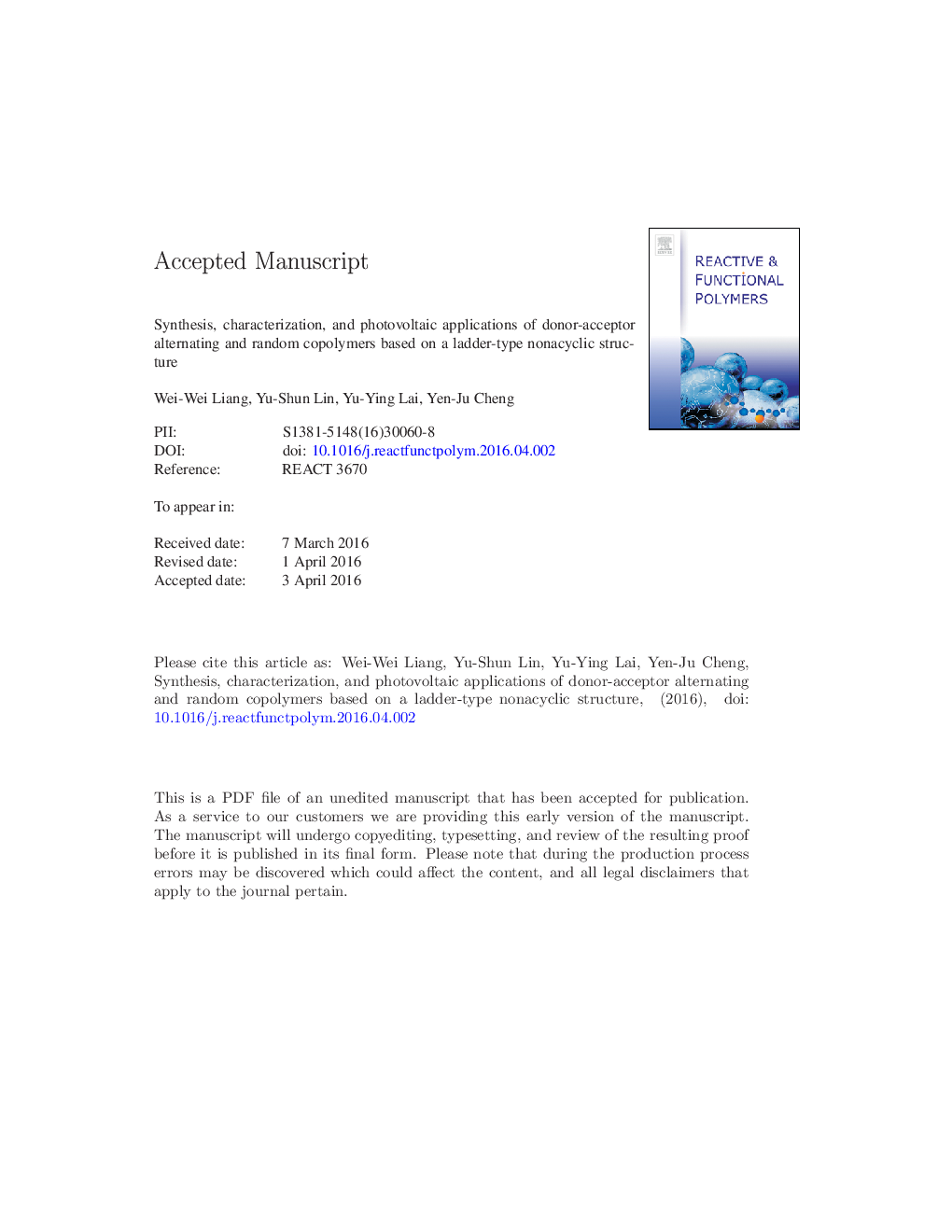| Article ID | Journal | Published Year | Pages | File Type |
|---|---|---|---|---|
| 5209490 | Reactive and Functional Polymers | 2016 | 26 Pages |
Abstract
A nonacylic building block TPTPT with the alternate thiophene and benzene subunits fastened by four bridging methylene groups was connected with various acceptors including diphenylquinoxaline (QX), thieno[3,4-c]pyrrole-4,6(5H)-dione (TPD), thieno[3,4-b]thiophene (TT) to afford donor-acceptor (D-A) alternating copolymers - PTPTPTQX, PTPTPTTPD, and PTPTPTTT and random copolymers - PTPTPTQX11, PTPTPTQX12, PTPTPTTPD11, PTPTPTTPD12, PTPTPTTT11, and PTPTPTTT12. The thermal, optical, and electrochemical properties of these copolymers were measured and compared. The random copolymers all have higher glass transition temperature (Tg) than the corresponding alternating copolymers. ONIOM (our own n-layered integrated molecular orbital and molecular mechanics) calculations suggest that the increase of planarity in the random copolymers arises from the introduction of thiophene units intercalating between donor and acceptor moieties. Bulk heterojunction (BHJ) polymer solar cells (PSCs) were fabricated on the basis of ITO/PEDOT:PSS/polymer:PC71BM/Ca/Al device configuration. When the acceptor is QX or TPD, the resultant alternating copolymers performed superior than the random counterparts. When the acceptor is TT, the high content of TT seems to be harmful to the device efficiency, which may relate with the strong quinoidal character of the TT unit. Overall, for the TPTPT core structure, in the used acceptors, the alternating-copolymer arrangement appears to be a better construction manner for the purpose of BHJ PSC applications.
Related Topics
Physical Sciences and Engineering
Chemistry
Organic Chemistry
Authors
Wei-Wei Liang, Yu-Shun Lin, Yu-Ying Lai, Yen-Ju Cheng,
